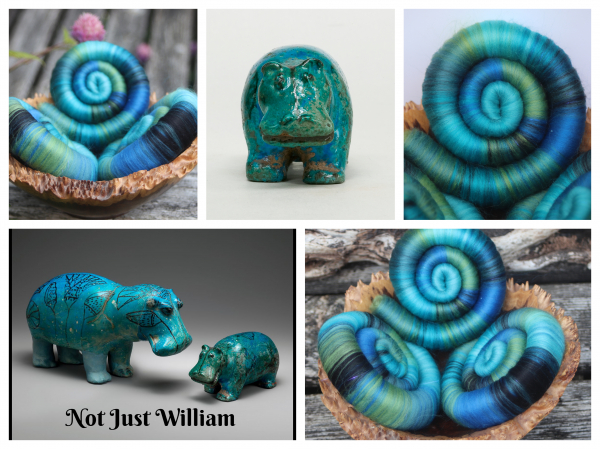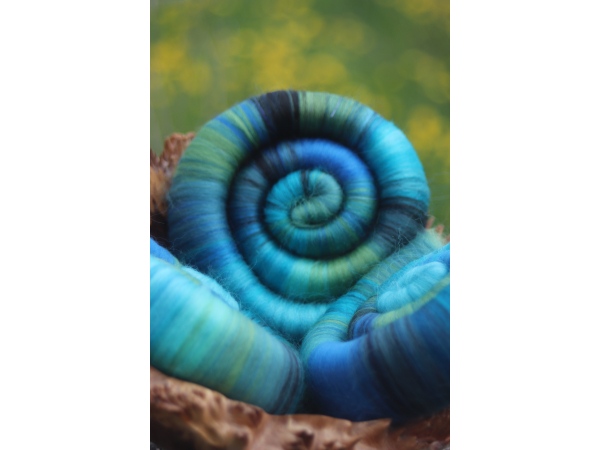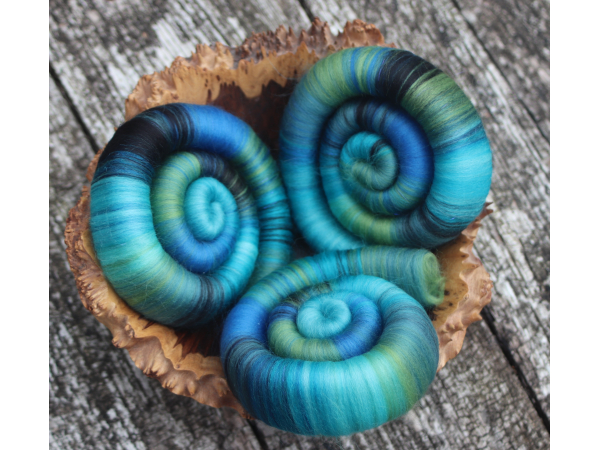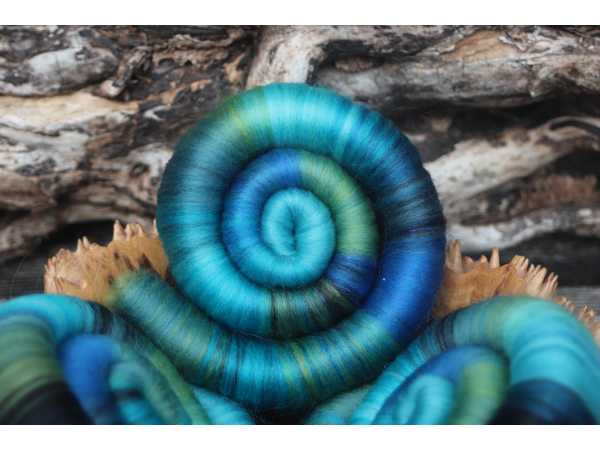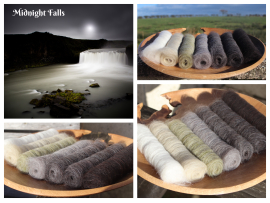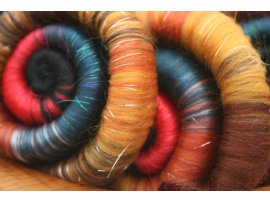1st September 2025.
I am happy to say that I can now ship to the USA again! I will be shipping using the new Royal Mail Duties Paid service. This means that I will collect the 10% tarrif when you place an order. This will be paid to Royal Mail when I purchase your shipping label. Royal Mail will then pay the relevent duties to the required authorities. This means that you will not have to pay any further charges to receive your package in the USA.
If you have any questions, or would like a custom order, please contact me at
carol@fellviewfibres.co.uk
These rolags were made as part of the Ancient Artists rolag club. The inspiration photograph is taken from the Met Museums collection. The photographs are of Hippo amulets made from an amazing glass like substance called Faience.
They were made between 1961-1878BC from faience, the larger statuette of a hippopotamus is called William. This nickname first appeared in 1931 in a story published in Punch magazine. It reported about a family that consulted a print of the Met’s hippo—which they call "William"—as an oracle. The name caught on.
The body of the hippo was painted with lotuses. These represent the marshes in which the animal lived, but at the same time their flowers also symbolize regeneration and rebirth as they close every night and open again in the morning.
To the ancient Egyptians, the hippopotamus was one of the most dangerous animals in their world. The beasts might also be encountered on the waterways of the afterlife. This could explain why three of its legs have been restored because they were probably purposely broken to prevent the creature from harming the deceased.
This hippo amulet was found in the tomb of steward Senbi II
The second, smaller amulet was found in the wrappings of Renisnenb's mummy at the small of the back.
The rolags are made from both 21 micron and 18.5 micron merino, blended with baby llama and tussah silk.
The merino and llama fibres will felt. If you do not wish them to, hand wash in cool water.

